What to Do in Puerto Vallarta: Unforgettable Land & Sea Experiences
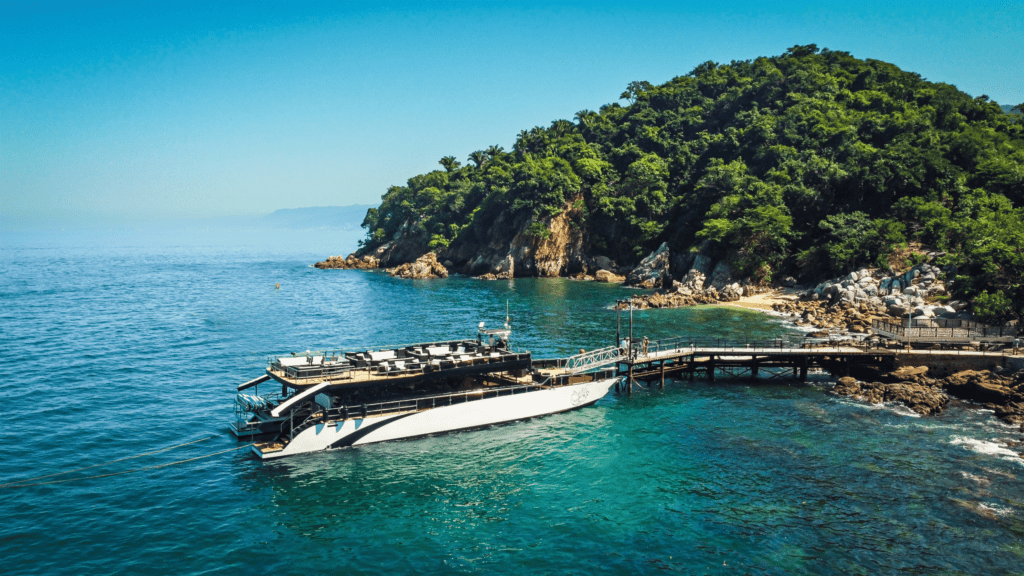
Puerto Vallarta is one of Mexico’s most loved coastal destinations for good reason; it offers the perfect mix of tropical beauty, vibrant local culture, and adventure both on land and at sea. Whether you’re strolling through cobblestone streets lined with art galleries or cruising across Banderas Bay on a luxury yacht, this city gives you something special every day. Many travelers visit without realizing just how much there is to do beyond the beach. From island-hopping with Palmara Charters to exploring local markets and jungle trails, Puerto Vallarta delivers unforgettable memories for every kind of traveler. This guide covers everything you need to plan your perfect balance of relaxation, exploration, and excitement. Why Puerto Vallarta Should Be on Your Travel Radar Puerto Vallarta sits along Mexico’s Pacific coastline on the Bay of Banderas, one of the largest natural bays in the world. This unique geography makes it ideal for both marine exploration and coastal adventures. The surrounding Sierra Madre mountains give a dramatic backdrop while the clear blue waters provide endless opportunities for boating, diving, and snorkeling. For travelers who love the sea, Palmara Charters offers private yacht and catamaran trips that take you to hidden beaches, secluded islands, and calm snorkeling bays. On land, the city’s old-town charm, colorful murals, and lively boardwalk blend culture with comfort. Whether you’re after a luxury yacht day, a casual beach escape, or a romantic evening cruise, Puerto Vallarta perfectly combines adventure, relaxation, and style in one destination. Best Time to Visit for Weather & Sea Conditions Puerto Vallarta enjoys warm, tropical weather year-round, but choosing the right time to visit can make a big difference in your experience. The high season runs from November to April, bringing dry weather, calm seas, and great visibility for snorkeling and whale-watching. This is also the most popular time for private charters and sunset cruises with Palmara Charters. The shoulder months, May, June, and October, offer slightly fewer crowds and lower prices, but the humidity rises, and brief showers are common. The rainy season, July through September, brings lush greenery and dramatic sunsets, though sea conditions can be choppier. For smooth sailing and crystal-clear water, plan your charter between December and March when whales migrate through Banderas Bay and conditions are ideal for open-water excursions. Puerto Vallarta Neighbourhoods Worth Exploring (and Which to Skip) Puerto Vallarta is a patchwork of lively neighborhoods, each offering its own mix of culture, dining, and atmosphere. From the vibrant streets of Zona Romántica to the authentic feel of 5 de Diciembre and the trendy cafés of Versalles, every area gives visitors a different side of the city. Exploring these districts lets you experience Puerto Vallarta beyond the beaches, think colorful murals, street food, and local music. While most zones are safe and welcoming, some outer or poorly lit areas north of the hotel zone are best avoided at night due to limited services. Stick to well-known districts for a richer, safer, and more enjoyable visit. Zona Romántica (Old Town / Viejo Vallarta) Zona Romántica is where Puerto Vallarta’s charm truly shines. This neighborhood is full of cobblestone streets, colorful homes, and ocean-view cafés. It’s home to some of the city’s best beach bars and boutique restaurants, making it a favorite for couples and art lovers. Spend your morning exploring local galleries, then end your day watching the sunset from Los Muertos Pier. Many travelers choose to stay here for its walkability and easy access to the marina for boat trips. 5 de Diciembre This district blends local life with modern touches. You’ll find authentic taco stands, cozy seafood restaurants, and a friendly community vibe. It’s also conveniently close to the Marina Vallarta, where Palmara Charters launches many of its private yacht excursions. Travelers looking for a mix of local flavor and easy charter access will find this neighborhood a great base. Versalles Versailles is a rising star in Puerto Vallarta’s food and lifestyle scene. With chic cafés, boutique hotels, and creative dining options, it attracts travelers who want to explore beyond the tourist zones. It’s quiet at night but lively during the day, perfect for digital nomads or visitors who want a peaceful stay close to major attractions. While most neighborhoods are safe and welcoming, it’s wise to avoid isolated outskirts or undeveloped areas after dark. Stick to well-known tourist zones and always use verified transportation options when heading to and from your charter. Top Land & Sea Activities You Can’t Miss Puerto Vallarta’s magic lies in the balance between land and sea. Whether you crave an adrenaline rush or peaceful exploration, there’s something here for everyone. Top Sea Adventures with Palmara Charters: Private Yacht Charters – Luxury day trips across Banderas Bay with drinks, meals, and water toys. Island & Beach Excursions – Visit hidden gems like Yelapa, Majahuitas, and Marietas Islands. Snorkeling & Marine Life Tours – See dolphins, manta rays, and tropical fish in crystal-clear waters. Sunset Cruises – Perfect for couples or groups wanting dinner and views on the open water. Land-Based Experiences: The Malecón Boardwalk – A vibrant walkway lined with sculptures, shops, and street performers. Jungle Hikes & Waterfalls – Explore scenic trails near El Eden and Palo Maria. Local Markets & Cooking Classes – Learn authentic Mexican cooking or shop for handmade crafts. Each activity can be tailored for couples, families, or groups. Half-day boat trips are ideal for short getaways, while full-day charters give time to explore multiple islands and enjoy onboard dining. The Best Beaches & Island Escapes Near Puerto Vallarta Puerto Vallarta’s coastline is packed with beautiful beaches, but some of the best spots can only be reached by sea. With Palmara Charters, you can explore quiet coves and secret stretches of sand away from the crowds. Beach / Island How to Reach Best Time to Visit Highlights Islas Marietas Boat (Private Charter) Dec–Apr Hidden Beach, snorkeling, birdwatching Colomitos Beach Boat or short hike Year-round Secluded cove, great for swimming Yelapa Boat (Palmara Catamaran) Nov–May Small village, waterfall, beach dining Majahuitas
Who Are the Indigenous Huichol People of Jalisco & Nayarit? A Brief History
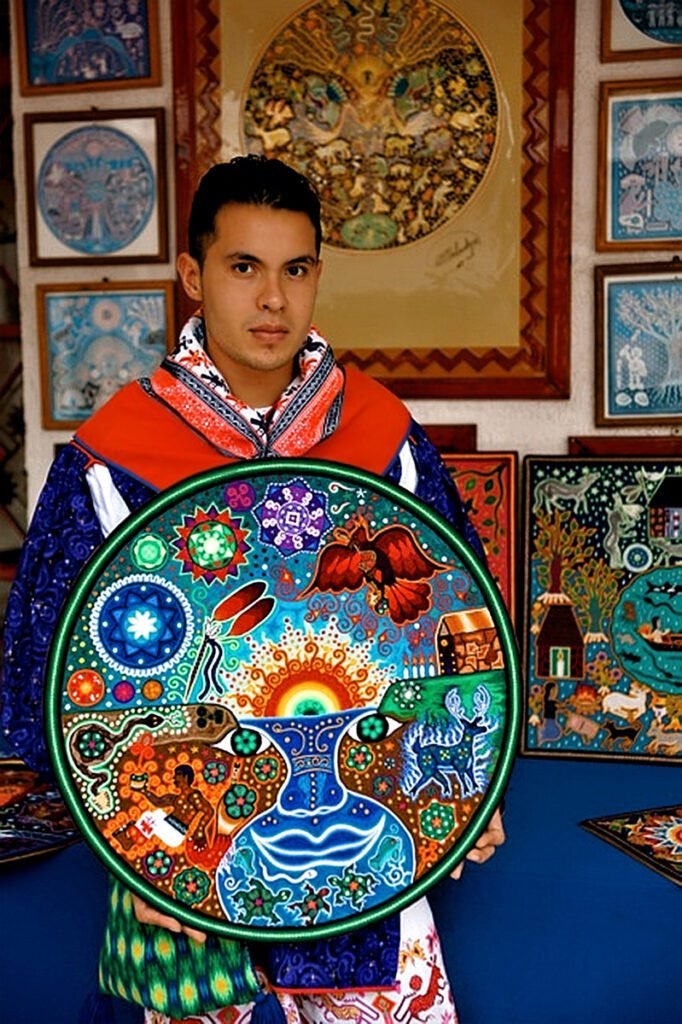
The Huichol people, also known as the Wixáritari, are an indigenous group that resides primarily in the mountainous regions of the states of Jalisco, Nayarit, Zacatecas, and Durango in Mexico. They have a rich cultural heritage and maintain strong ties to their traditional way of life. It’s important to note that the Wixárika people, often referred to as Huichols, want to clarify that the term “Huichol” translates to “he who flees,” a description that doesn’t accurately reflect their identity. In reality, the term Wixárika holds the true essence, meaning “a person with a deep heart who loves knowledge.” This distinction is crucial, and it is expounded upon in this work tailored for a younger audience to foster a better understanding of the Wixárika people’s cultural identity. Where do the Wixárika (Huichol) People Live? The Huichol people are primarily concentrated in the rugged and remote areas of the Sierra Madre Occidental, where the challenging terrain has helped preserve their traditional way of life. The isolation of their communities has allowed them to maintain a strong connection with their ancestral lands and cultural practices. Luckily if yo have a keen interest in visiting a tribe and seeing how they live their lives in the mountains – there are specific tours available for such an experience. Here are some specific places to research if you’re interested; Tateikie: A community nestled in the Sierra Madre Occidental in the state of Nayarit. Tuapurie: Situated in the Jalisco highlands, this community is known for its traditional way of life and preservation of Huichol customs. San Andrés Cohamiata: Located in the state of Jalisco, it is one of the larger Huichol settlements and holds cultural significance. Santa Catarina Cuexcomatitlán: Found in the state of Jalisco, this community is known for its vibrant Huichol artistry. Tuxpan de Bolaños: A community in the state of Jalisco that reflects the Huichol’s connection to nature and their spiritual practices. What Language do the Wixárika (Hucihol) Speak? The Huichol people have their own language, called Huichol or Wixárika, which belongs to the Uto-Aztecan language family. Language plays a crucial role in preserving their cultural identity, and is a vital part of their heritage. It reflects their unique worldview and serves as a means of communication within their communities. The preservation of the Huichol language is crucial for passing down traditional knowledge and maintaining cultural cohesion. Religion and Spirituality Huichol spirituality is deeply intertwined with nature, and they believe in a complex pantheon of deities. Their spiritual practices involve rituals, ceremonies, and the use of peyote, a hallucinogenic cactus that is considered sacred and used for spiritual enlightenment. Pilgrimages to Wirikuta are undertaken with great reverence, symbolizing the connection between the physical and spiritual worlds. Shamanism plays a significant role in Huichol culture. Shamans, known as marakames, serve as spiritual leaders and intermediaries between the human and spiritual realms. They perform healing ceremonies, divination rituals, and lead the pilgrimage to Wirikuta, a sacred site where peyote is harvested. It’s possible to be married through the Huichol traditions here in Puerto Vallarta. For an authentic and culturally significant wedding, this is a unique and special way to be married by the ancestors of Mexico. Art and Craftsmanship Huichol art is characterized by its vivid colors and intricate designs, reflecting the vibrant culture and spiritual beliefs of the community. It’s a unique style of artwork that once you see it once, you will recognize it immediately as being Huichol. In my opinion they are wonderful and in many cases I wish I could buy half of the sculptures I see when I walk into a store or walk by a pop up market. They’re creative and beautiful – what’s not to like? They also have yarn paintings which are created by pressing yarn into a layer of beeswax on a wooden board, forming detailed and colorful images. Beadwork is meticulously crafted, with each bead carefully placed to produce symbolic patterns and representations of their mythology. Community Structure Huichol communities are organized around extended families and clans, fostering a strong sense of kinship and communal support. Traditional governance involves spiritual leaders, known as marakames, who guide religious ceremonies and provide leadership in community matters. Decision-making is often based on consensus, emphasizing collective responsibility and participation. Huichol society is organized around extended family units and community cooperation. They live in communal settlements known as wixárika, which consist of multiple households. Each community has its own governance structure and system of collective decision-making. Agriculture and Subsistence Agriculture plays a central role in Huichol life, and their farming practices are adapted to the challenging mountainous terrain. Swidden agriculture involves clearing small plots of land for cultivation, allowing the soil to regenerate naturally. Corn and beans are staple crops, forming the basis of their diet and cultural practices. More specifically, here are some main staple foods the Huichol people use/cultivate: Maize (Corn): Maize is a fundamental crop in Huichol agriculture, serving as a dietary staple. It is used to make various traditional foods. Beans: Beans are often cultivated alongside maize, providing a complementary source of protein in the Huichol diet. Squash: Squash is another essential crop, offering nutritional diversity and adaptability to the local environment. Amaranth: Amaranth is a nutritious grain that has historical and cultural significance in the Huichol diet. Agave: The Huichol use agave for various purposes, including making fermented beverages like pulque. The leaves are also used for weaving. Traditional Clothing The enchanting attire of the Huichol people serves as a vibrant tapestry, weaving together threads of cultural identity and artistic expression. Intricate embroidery graces the tunics of men and blouses of women, adorned with captivating geometric patterns and symbols intricately intertwined with the fabric of their cosmology. Worn during ceremonies and special moments, these traditional garments become more than clothing; they metamorphose into symbols of pride and a timeless connection to their heritage. Women, adorned in long, colorful skirts and embroidered blouses, crowned with headdresses, radiate the spirit of tradition. Men, in loincloths, shirts, and
Top 5 Best Free Things to-do In Puerto Vallarta (part 2)
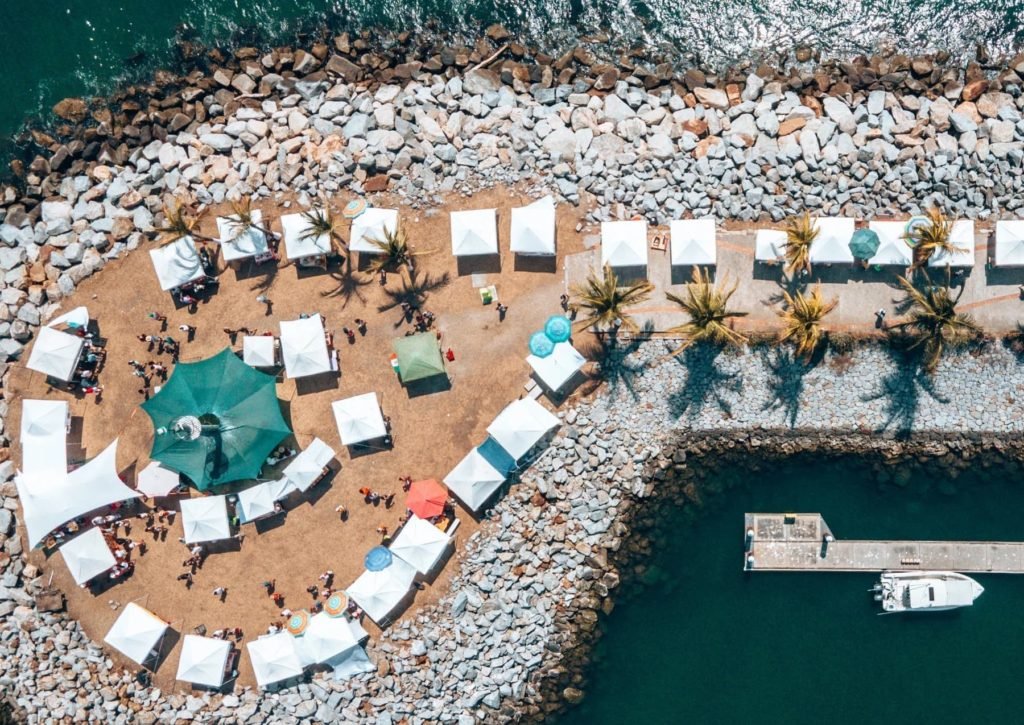
The best things to do in Puerto Vallarta for free are: Palo Maria and Nogalito waterfall hike, Cathedral visiting, exploring the outdoor markets, Art Gallery night walk, and watching turtle hatchings. Let’s talk about each one in more detail. Hiking Around Puerto Vallarta For this list I made sure to only include hikes that are easy to intermediate, nothing to strenuous or outlandish so most people can try each of these hikes out. a) Palo Maria Get ready for an epic hike that’s the talk of the town – seriously, it’s a must, especially when the weather’s cooled down a bit after the rainy season. The trail is short, just around 20 minutes, but it’s a blast, taking you over boulders and through streams (yep, your shoes might get a little wet, so wear the grippy ones, not flip flops). Start your adventure right off the main road near Garza Blanca in the Conchas Chinas area – super easy to get to from downtown Puerto Vallarta. Once you hit the waterfall, it’s like nature’s reward ceremony. The water is clear as day, a bit chillier than the ocean, and guess what? You can swim with the local fish! Feeling brave? There are spots deep enough to jump off the rocks, but hold up – you’ll need a rope to get back up the wet, rocky slope. Now, here’s the deal – no facilities at the waterfall, so pack your water, sunscreen, and a picnic. And if you’re feeling extra adventurous, there are more waterfalls waiting if you trek up the left side of the cliff face – just be cautious, okay? It’s all about embracing the thrill and making your own wild discoveries! ?? #EpicHike #VallartaAdventures #NatureThrills Directions: Palo Maria b) Nogalito Important notice: **This hike is only suitable for dry conditions. During rainy season this place is inaccessible** This is a wonderful hike with a spectacular final destination. But first the slightly tricky part will be finding the hike. To locate the starting point of the hike, keep your eyes open while driving towards Mismaloya – it will be on the left side before you reach Mismaloya and right across the street from Playa Punta Negra. Google map”El Nogalito” to be directed to the restaurant. Once you make the turn off of the main highway road, the dirt road is really only accessible with an SUV with clearance, so taking a small car is not advisable. Once you park your car in the parking lot, head up the inclined driveway towards the restaurant. You can eat and drink here before or after your hike – whatever your heart/stomach desires. As you navigate the restaurant grounds, a path will guide you towards the hike itself. The journey spans approximately 1-2 hours, contingent on your pace, and winds through rocky terrain. Along the way, you’ll encounter a petite freshwater pool. However, the true spectacle awaits just beyond this modest oasis—a breathtaking waterfall. To enhance your experience, we often bring hammocks and snacks to relax by the pool’s side and savor the cool, invigorating waters. Though the water may be notably brisk, it’s always exceptionally refreshing after your hike. The opening of the rock once you reach the waterfall itself is a wondrous sight to behold. Nature never disappoints! ??? #Mismaloya #Vallartahike #Mexicohike Directions: Nogalito c) Monkey Mountain Explore the renowned Monkey Mountain, locally known as “Cerro del Mono,” a sought-after hiking spot near Punta de Mita, Nayarit. This trail promises a picturesque journey through vibrant tropical jungle terrain and rewards hikers with a breathtaking 360-degree view from the summit. Conveniently located about 10 minutes by car from Punta de Mita or a 20-minute drive south from Sayulita, it caters to all adventure enthusiasts. Trail Challenge: The hike presents varying difficulty levels, with some moderately challenging sections. It’s ideal for those with a moderate fitness level and some hiking experience, featuring steep segments and uneven terrain. Time Commitment: Plan for a 2 to 3-hour trek to reach the summit, depending on your pace and break preferences. The return journey is typically quicker. Scenic Splendor: As you ascend, immerse yourself in the lush jungle surroundings, benefitting from shaded trail sections for sun relief. For an optimal experience, kickstart your hike early to avoid crowds and intense midday sun, especially before 10 am. Best Timing: Busy periods, like Christmas and Semana Santa in April, attract more hikers, so consider exploring Monkey Mountain on mid-week days for a more tranquil outing. Natural Beauty: The trail is adorned with rich greenery and tropical flora, enhancing the overall beauty of the expedition. Arm yourself with mosquito repellent and stay vigilant for scorpions to ensure a safe and enjoyable hike. Also sadly, there’s no actually monkeys on this hike – it’s simply a name. ?? #Monkeymountain #Puntademita #hikingvallarta Directions: Monkey Mountain 2. Visiting Puerto Vallarta’s Cathedrals a) Cathedral of Our Lady of Guadalupe (Parroquia de Nuestra Señora de Guadalupe) One of the most remarkable landmarks in Puerto Vallarta is the Cathedral of Our Lady of Guadalupe. Towering as the tallest in the city, it captures attention nestled in downtown, particularly dazzling at night with its illuminated grandeur. Recognized for its distinctive crown design, the cathedral stands as an architectural beacon. Constructed in the early 20th century and completed in 1951, the Cathedral is dedicated to Our Lady of Guadalupe, the patroness of Mexico. It serves as the seat of the Roman Catholic Diocese of Puerto Vallarta and hosts the famous “Noche de Reyes” every January 5th, drawing thousands for carol singing and the blessing of the Three Wise Men. Open daily to the public, the Cathedral is a must-visit for tourists, showcasing not only architectural beauty but also deep historical and cultural significance. Directions: Cathedral of Our Lady of Guadalupe b) Iglesia Bíblica Cristiana Other noteworthy cathedrals include Iglesia Bíblica Cristiana in Cinco de Diciembre, walking distance from Our Lady of Guadalupe. This used to be the tallest building in all of Vallarta for many years, and holds a
When is Puerto Vallartas Rainy Season?
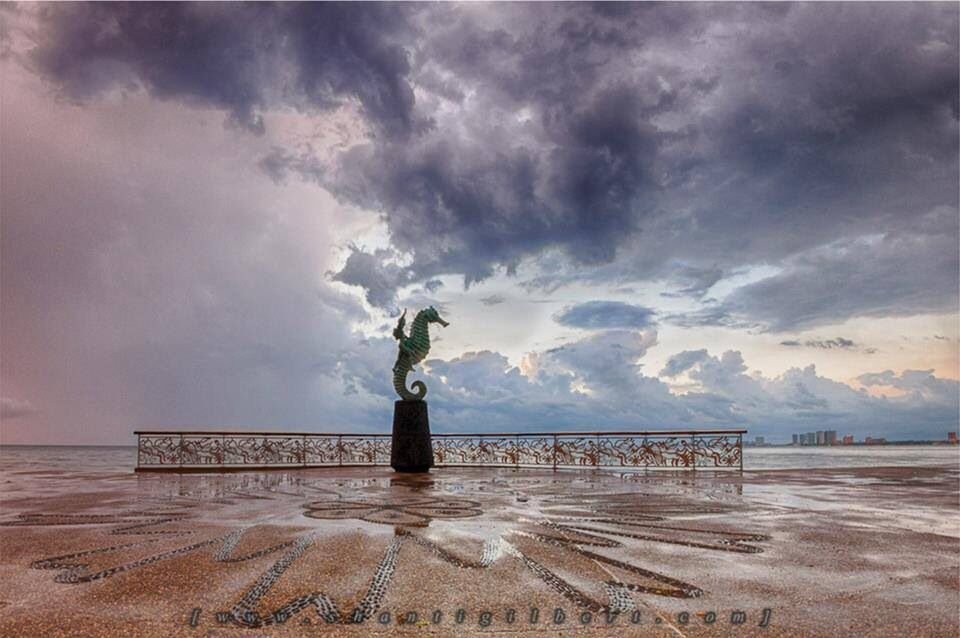
Puerto Vallarta’s rainy season typically spans from mid June to mid October, and often only rains at nighttime. During this time, the region experiences warm temperatures with high humidity and a higher chance of rain, which contributes to lush landscapes and vibrant flora. While it may not be as popular as the dry season, the rainy season offers numerous advantages, including lower prices, fewer crowds, and a unique opportunity to witness the region’s natural beauty in full bloom. Some relish the unique charm it brings, while others might find the heat and humidity a bit overwhelming. Here’s a deeper dive into the rainy season in Puerto Vallarta, and why it’s a season of dualities. When Does Puerto Vallarta’s Rainy Season Start? When June rolls around, Puerto Vallarta undergoes a remarkable transformation. What was once a sun-drenched, arid landscape suddenly awakens with lush greenery. Frequent afternoon showers and occasional thunderstorms breathe life into the region, turning it into a vibrant and emerald paradise. For nature enthusiasts, this is prime time. The gardens, jungles, and mountains come alive with a dazzling array of colorful flowers and thriving plants. The rainy season offers a unique opportunity to witness the full potential of the region’s flora. Misconceptions There’s a common misconception about Puerto Vallarta’s rainy season: the belief that it’s four months of non-stop rain. But the reality is quite different. While the rainy season does bring precipitation, it usually doesn’t disrupt your daytime adventures. Here’s the lowdown on what to expect during this unique season. Evening Rain: Contrary to popular belief, Puerto Vallarta’s rainy season is not characterized by day-long downpours. Instead, it’s the evenings that often see rainfall, as the sun dips below the horizon. Most mornings and early afternoons are kissed by brilliant sunshine, creating perfect conditions for exploration. Sun-Kissed Days: If you revel in hot and humid weather, you’re in for a treat. Mornings break with clear skies and the promise of a beautiful day. You can soak in the sun, explore the beaches, or embark on outdoor excursions. The rain typically arrives after the sun has had its time to shine, making each day worth while if you’re into playing golf, enjoy surfing the swells, or simply want to find a palapa and relax on a beach. Rainy Season Benefits Less Crowded Attractions: With fewer tourists visiting Puerto Vallarta during the rainy season, you’ll find that popular attractions and beaches are less crowded. This means you can relish the city’s charm without the hustle and bustle that typically characterizes the November-to-April tourist season. Depending on the restaurant or attraction, process can often be reduced during this time of the year. Making it a more affordable time to go out on the town. An Alternative Experience: Some travellers specifically choose to visit Puerto Vallarta during the rainy season to savor this quieter, more laid-back side of the city. Without the cruise ships docking in port and with many tourists enjoying their own summer back home, Puerto Vallarta takes on a different, more tranquil ambiance. It’s a time when you can immerse yourself in the local culture, enjoy the beaches, and dine at leisure. Thunderstorms: Puerto Vallarta is of course known for its breathtaking beaches, stunning sunsets, and vibrant culture, but one of the city’s most awe-inspiring natural spectacles often goes overlooked – the incredible thunderstorms. When the rainy season sweeps over Puerto Vallarta, it doesn’t just bring rain; it delivers nature’s own fireworks show. Some of the most beautiful displays of lightning and loud booms of thunder you’ll ever see. I personally love rainy season in Puerto Vallarta for this exact reason. The storms here due to the large build up of humidity throughout the day give rise to some of the most incredible lightning shows and loudest cracks of thunder I’ve ever witnessed in my life. Warmer Waters: Depending on your preference, you may enjoy the temperature of a warmer ocean and swimming pools more during the rainy season, or you may not since they’re not as refreshing. But rest assured, the ocean temperature from June-September is incredibly warm. Some might say too warm even – but there is no cold feeling whatsoever as you enter the water. Personally I love that, where as others prefer cooler water temperatures to cool themselves down. If you’re interested in renting a boat or surfing and want to know the conditions of the water. That website will give you all the information you need. Boating: The summer season offers a more tranquil experience on the bay, making it an excellent time for activities like boating, snorkeling, paddle boarding, and swimming. Renting a boat in Puerto Vallarta during the rainy season is interesting and somewhat different than renting a boat during the dry season. This is because the waters are consistently more calm, meaning the waves aren’t as heavy, which translates into smoother cruising conditions and at times better fishing conditions. Additionally, the waters are clearer during this time of year, making snorkeling that much better. If you ever need more information about renting a boat while staying here in Vallarta, please feel free to contact us at Palmara Charters anytime. Rainy Season Downfalls Road Quality: When the heavens open up in Puerto Vallarta’s rainy season, it can wreak havoc on the city’s roadways. The constant onslaught of rain and the passage of vehicles over pre-existing cracks and holes in the pavement accelerate their deterioration. What starts as minor imperfections quickly evolve into troublesome potholes. This presents a challenge for motorists, particularly during heavy rain. Potholes become invisible traps filled with rainwater, making it tricky to discern their locations and depths. Navigating these obstacles turns into a game of chance, demanding extra caution. Potential Flooding: As the rain cascades down from the mountains and rushes towards the ocean, it sweeps through the city of Puerto Vallarta, especially in areas closer to downtown. While this natural occurrence is essential for replenishing the region’s lush greenery, it can lead to temporary flooding in certain
Top 5 FREE Things to-do In Puerto Vallarta (part 1)
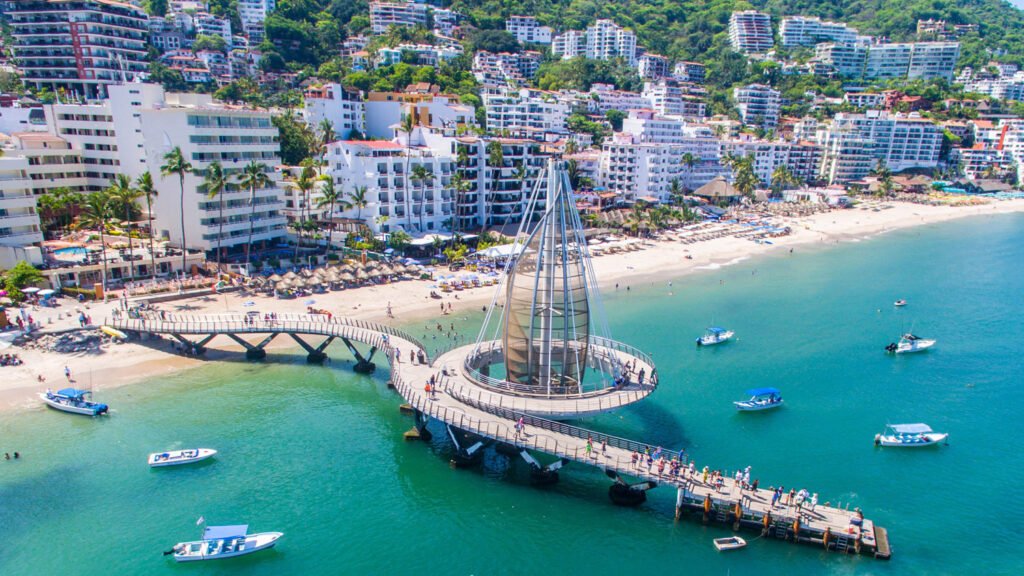
Vallarta offers plenty of free activities, including hiking to Mirador de la Cruz, strolling through the Romantic Zone/Los Muertos Pier, walking the Malecon, exploring beaches, and wandering Isla Rio Cuale. Are you seeking the ultimate insider’s guide to experiencing the best of Puerto Vallarta on a budget? Your search ends here! As a former resident of both Centro and Nuevo Vallarta for two years, I’ve already done the groundwork for you. Say goodbye to countless hours of internet research! Whether you have a week or just a few days to spare, you can effortlessly check off all five items on this curated list. The cherry on top? Every single experience comes at absolutely no cost to you. While indulging in a resort stay in Vallarta is a splendid means to relax and detach from the hustle and bustle of daily routines, it’s important to remember that there exists an entire realm of wonders beyond the confines of the resort gates. Vallarta, nestled in the captivating embrace of the Bay of Banderas, holds a wealth of hidden treasures just waiting to be explored. Venture beyond the boundaries of your resort, and you’ll discover a cornucopia of awe-inspiring experiences and breathtaking sights that will leave an indelible mark on your journey. So, let’s dive right in and uncover a few of the best FREE experiences that Puerto Vallarta has to offer! 1. Mirador de la Cruz If you’re up for the climb, visiting Mirador de la Cruz (the View Point) is an absolute must. The effort is well rewarded by the breathtaking panoramic view it offers. From this elevated vantage point, you can take in the entire expanse of Vallarta. The sight encompasses everything from whales gracefully breaching in the distance to the vibrant downtown area, the Hotel Zone, Marina, Nuevo Vallarta, and extends all the way to the scenic point of Punta Mita. To truly appreciate the city, venture to the backside of the cross where you’ll discover the tunnel that links the negihborhood of Agua Azul to Zona Romantica, and views of the largest neighborhood in Vallarta – Pitillal. Here, you’ll gain a comprehensive perspective of Vallarta as a whole, realizing its vastness and scale. Many visitors tend to confine themselves to the popular areas near the beach, unaware that the majority of locals reside on the opposite side of the main highway (highway 200) to the east. From the elevated viewpoint, you’ll not only grasp the size of Vallarta, but also gain an appreciation for the sheer magnitude of the Bay of Banderas. Without observing it from above, it’s difficult to comprehend the immense stretch of this bay. Spanning approximately 42 kilometers (26 miles) from Punta Mita in the north to Cabo Corrientes in the south, the Bay of Banderas encompasses an area of about 1,500 square kilometers (579 square miles). If you’re interested in embarking on this adventure, the starting point of the walk is located at the end of Gringo Gulch, an area known for its movie star residents. Simply head up the hill, slightly north from Cathedral de Guadalupe (the famous church with the grey crown). For your convenience, here is the Google Maps location of Mirador de la Cruz so you can navigate your way there. Enjoy the spectacular views! 2. Romantic Zone and Los Muertos Pier Next on the list is something I recommend doing both during the daylight with sunshine, and at night. Sunset is the ideal time to immerse yourself in the charm of Old Town while taking a leisurely beach stroll. As the sun dips below the horizon, it casts a gentle pink and orange glow on the hillside buildings, creating a captivating atmosphere. No visit to Vallarta is complete without exploring the place where its oldest roots lie. As tourism flourished in the late 1960s and early 1970s, thanks to the global recognition brought by the movie “Night of the Iguana,” the Romantic Zone (Old Town) witnessed the emergence of numerous buildings. Tourists flocked to the area, staying at beachfront resorts while admiring the architectural beauty and cobblestone streets that give Old Town its illustrious charm. The architecture in the Romantic Zone is a delightful fusion of traditional Mexican elements and contemporary designs. Colorful buildings, charming boutique hotels, inviting cafes, and captivating art galleries line the streets, inviting exploration. Moreover, the neighborhood is a haven for food enthusiasts, boasting a diverse culinary scene that caters to all tastes, from mouthwatering traditional Mexican street food to refined international cuisine. After the sun sets, the Romantic Zone comes alive with its vibrant nightlife, offering a variety of bars, clubs, and live music venues. The Romantic Zone also embraces a relaxed and bohemian ambiance, attracting a diverse mix of locals, expatriates, and tourists. The neighborhood fosters a welcoming and inclusive atmosphere, celebrating Mexican culture alongside international influences and a vibrant LGBT community. Muertos Beach, located within the Romantic Zone, beckons nearly all visitors to its sandy shores. As the most popular beach in Vallarta, it offers a picturesque setting for relaxation and recreation. At Muertos Beach, you’ll also find the iconic Los Muertos Pier. Situated in the heart of the Old Town district, the pier extends into the Bay of Banderas, providing breathtaking views of the water and the surrounding mountains. The Los Muertos Pier holds a special appeal for both tourists and locals, offering a delightful setting for leisurely strolls, scenic vistas, and people-watching. Along the pier, you’ll encounter an array of shops, restaurants, and bars, providing a diverse range of dining and entertainment options. Additionally, the pier showcases various art installations and public artwork, inviting exploration and appreciation of the city’s vibrant culture. A highlight of the Los Muertos Pier experience is witnessing its magnificent sunsets. The pier offers a prime location to observe the sun descending over the bay, attracting locals and visitors alike to gather and savor the evening spectacle. Fishing enthusiasts can also be spotted casting their lines off the pier in search of a catch. At
Where is Mayto and Is It Worth the Journey There?
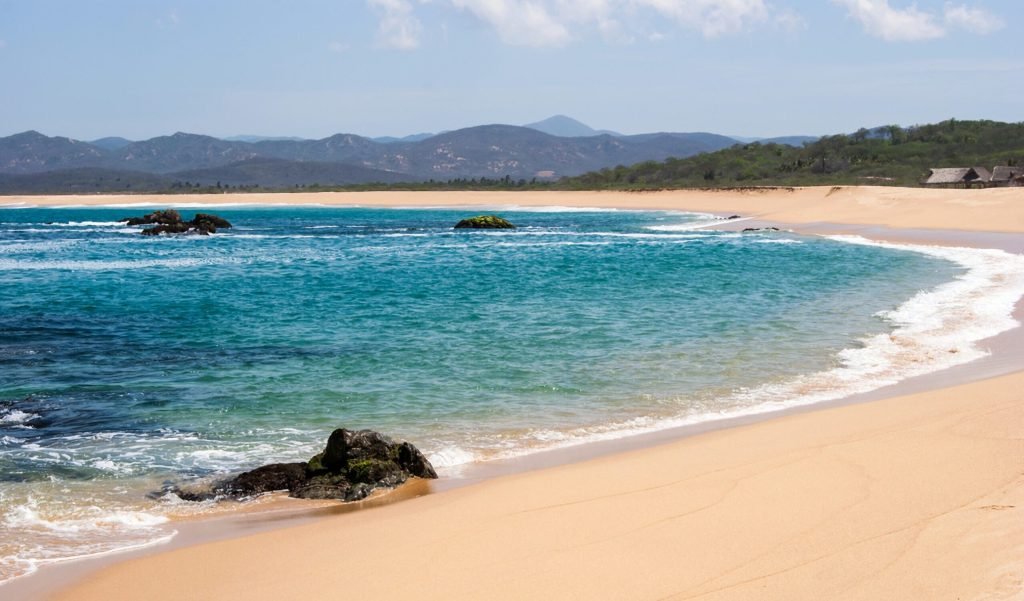
Mayto, located several hours south of Puerto Vallarta by car or accessible by boat outside the Bay of Banderas, is well worth the trip if you have a night or two to explore and experience the charm of this small coastal town. This small town may just be the biggest hidden gem that remains close to Puerto Vallarta. While millions of people flock to the shores of Puerto Vallarta each year, it’s only in the hundreds of people per year that manage to find Mayto. It begins with most simply unaware of this hidden oasis tucked around the point of Banderas Bay – but when more people do in fact realize what this place is like. It may not be hidden for much longer. Tehaumixtle Before we get to Mayto, let’s talk about a destination you’ll likely come across before arriving to Mayto. The charming little fishing town of Tehuamixtle. Tehuamixtle is a small fishing village situated on the Pacific coast of Mexico, in the municipality of Cabo Corrientes. It is known for its tranquil atmosphere, pristine beaches, and authentic Mexican charm. Here are some key features and attractions of Tehuamixtle that are worth the trip to experience: Beaches: Tehuamixtle is blessed with gorgeous sandy beaches and crystal-clear waters. Playa Tehuamixtle, the main beach, is perfect for swimming, sunbathing, and enjoying stunning sunsets. The beach is surrounded by lush tropical vegetation and offers a serene and secluded setting. Stay within the inlet however, as the nearby waters are far too strong for 99% of swimmers and have a dangerous under-toe. Fishing Village: Tehuamixtle has maintained its traditional fishing village vibe, with local fishermen going out to sea daily to catch fresh seafood. Visitors can witness the vibrant fishing activity and experience the authentic coastal lifestyle. Fresh Seafood: Tehuamixtle is renowned for its delicious seafood dishes. Visitors can savour an array of fresh catches, including shrimp, red snapper, lobster, and octopus, prepared in traditional Mexican recipes. You can bet anything you eat here will be caught that same day – cant beat that freshness! Whale Watching: Tehuamixtle is part of the migration route for humpback whales. During the winter months (December-March), visitors have the opportunity to witness these majestic creatures as they pass by the coast. Whale-watching tours can be arranged to observe these incredible marine mammals up close. However if you’re chartering your course towards Mayto, you will likely see whales along the way during those months. There’s also a high chance of viewing turtles and dolphins swimming on the surface. Ecotourism: The surrounding area of Tehuamixtle is rich in natural beauty, making it an excellent destination for ecotourism. Explore the lush jungles, hike through scenic trails, and discover hidden waterfalls in the nearby Sierra de Vallejo. Talk to us at Palmara Charters to learn more about Tehuamixtle. It’s possible to reach here by car, at only 100km away from Vallarta, it will take approximately 2 hours and 40 mins drive to reach Tehuamixtle. Mayto Mayto is another picturesque coastal village located in the Cabo Corrientes municipality, Jalisco. It is known for its pristine beaches, abundant wildlife, and peaceful ambiance. Its still relatively unknown by most, so development hasn’t quite hit Mayto yet. But thats changing as we speak. Luckily there is accommodation there once you arrive, feel free to check out the Hotel Mayto. Of course if you’re taking a boat you can stay overnight on the vessel. Here are some highlights of Mayto you won’t want to miss out on: Playa Mayto: Mayto boasts an expansive and untouched beach known as Playa Mayto. This long stretch of golden sand offers a tranquil escape away from the crowds, perfect for leisurely walks, sunbathing, and swimming in the azure waters. Turtle Sanctuary: Mayto is home to a sea turtle sanctuary dedicated to the conservation and protection of these endangered creatures. Visitors can participate in turtle release programs and learn about the efforts to preserve their natural habitat. Bird Watching: Mayto is a haven for bird enthusiasts. The village is surrounded by diverse ecosystems, including mangroves, estuaries, and tropical forests, attracting a wide variety of bird species. Birdwatchers can spot colorful tropical birds and migratory species in their natural habitats. Star Gazing: The night sky above Mayto unfolds an awe-inspiring spectacle, offering a celestial panorama untouched by the lights of Vallarta. On certain nights, the fortunate observer might be treated to a breathtaking display of thousands of stars, visible to the naked eye. This magical moment alone justifies the entire journey to Mayto. In a world dominated by bustling and densely populated cities, we often overlook the stars that quietly dot our skies. The inability to see them amidst the city lights causes us to forget about their existence. However, I believe there’s no greater act of self-reflection than gazing into the vastness of space and time, appreciating the brilliance of the starry night sky. Mayto serves as a sanctuary for this purpose, a majestic haven for relaxation and reconnection with nature. It prompts a gentle reminder of what truly matters – the tranquility of life, a rare commodity in a world where the rat race propels us forward at breakneck speeds, often causing us to lose sight of our purpose on this planet. For me, it’s the serenity, the nocturnal expanse, and the ability to peer into the boundless ocean, moonlight shimmering across its surface, that provide the perfect backdrop for deep introspection. Mayto, even during the daylight hours, extends a warm invitation to revel in its natural beauty. Whether you’re snorkeling, fishing, or indulging in delectable cuisine (especially aboard our yachts), Mayto ensures you feel not just comfortable but truly at home in its more secluded embrace. While you have the option to drive to Mayto, sailing on a yacht or boat presents the optimal mode of transportation, allowing you to immerse yourself fully in the extraordinary experience. Surfing and Water Activities: The beaches of Mayto offer excellent opportunities for surfing, bodyboarding, and other water sports.
When Is the Best Time To Go Whale Watching in Puerto Vallarta?
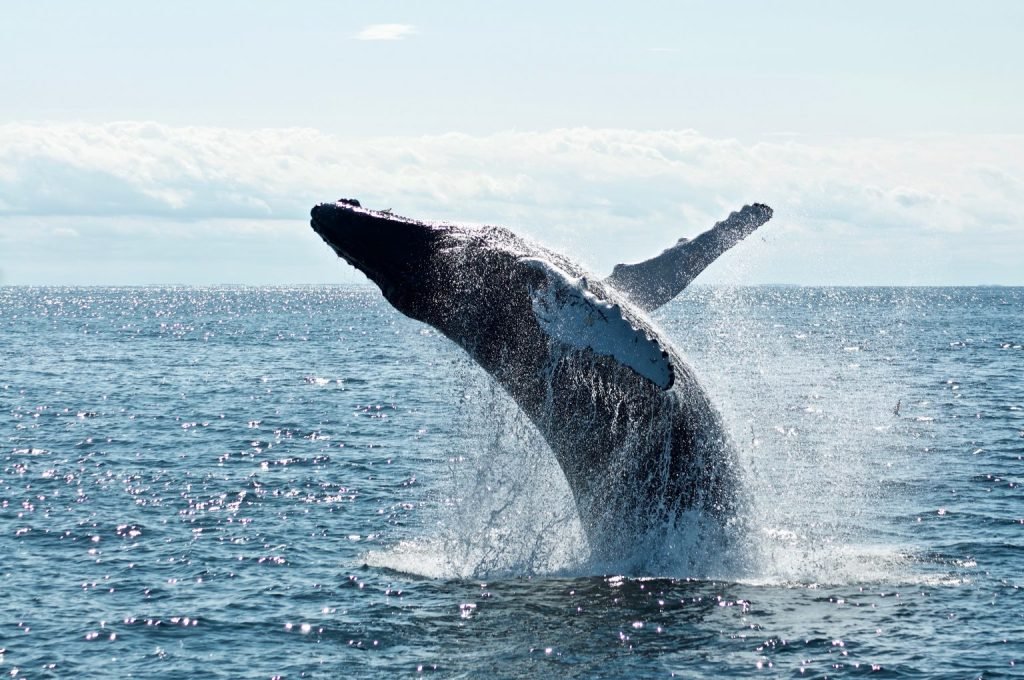
From early December to mid-March is the best time to go whale watching in Puerto Vallarta, since this is when the humpbacks come to breed and give birth. Banderas Bay is renowned for its abundance of humpback whales. These gentle giants migrate from the cold waters of the North Pacific to the warmer, more tranquil waters of Mexico’s Pacific coast. Bahía de Banderas provides an ideal environment for mating, calving, and nurturing their young due to its relatively shallow and protected waters. This breathtaking spectacle provides us with an opportunity to observe these magnificent creatures up close. While you can spot the whales from the shore by the water plumes coming from their blowholes, the best way to see them is undoubtedly on a whale watching tour or a private charter. Numerous companies offer these tours, which typically last around three hours. However, if you prefer a more exclusive and customized experience, we suggest arranging a charter with us. This way, you can enjoy being in a smaller group setting and have greater control over where the boat goes, which is especially useful for photography and videography looking for the perfect shot. Watching a whale breach from a close distance in a boat is an awe-inspiring and unforgettable experience. Witnessing a massive humpback launch itself out of the water and splash down is thrilling yet humbling. Depending on the boat’s proximity to the whale, you may even hear its breath as it breaches and the sound of its body hitting the water. Thankfully, Puerto Vallarta’s weather is typically ideal during whale watching season, ensuring your comfort while aboard and clear water conditions for observing whales beneath the surface too. The regulations for whale watching in Puerto Vallarta, Mexico require boats to maintain a distance of at least 60 feet (18 meters) from whales. This is to ensure the safety of both the whales and the passengers, and to minimize disturbance to the animals and their natural habitat. On a whale watching tour, visitors can expect to see a variety of whale behaviors, including breaching, tail slapping, and singing. Hearing a whale communicate is equally as interesting as watching it breach. Nothing like you’ve ever heard before, except on the Discovery Channel. Whale Watching in Puerto Vallarta – 5 Interesting Humpback Whale Facts Humpback whales have a gestation period of around 11 months, and their calves are born weighing around a ton and measuring 12-16 feet in length. Adult humpback whales are one of the largest species of baleen whales, with adults reaching lengths of up to 50 feet (15 meters) and weighing up to 40 tons. This weight is due to eating up to 3,000 pounds (1,360 kg) of food per day during the feeding season. These whales are known for their long, complex songs, which can last up to 20 minutes and are sung by male whales during the breeding season. Humpback whales are found in all of the world’s major oceans and typically migrate between their feeding and breeding grounds each year, traveling up to 16,000 miles (25,000 km) in some cases. Females give birth to a single calf every 2-3 years, which they nurse for around a year before weaning them. Now the question most people wonder, “Why do humpback whales breach the way they do?“ Answer: Even after years of whale watching, there is still not a clearly defined answer to this phenomenon. One theory is that breaching is a form of communication or a way to signal to other whales in the area. It may also be a way to attract a mate during the breeding season, as breaching is more commonly observed during this time. Another theory is that breaching may help to dislodge parasites or other irritants from the whale’s skin, as breaching often involves the whale slapping its body back down onto the water’s surface. Breaching may also simply be a way for humpback whales to play and have fun. Observations of young whales engaging in breaching behavior support this theory. Overall, breaching is likely a complex behavior with multiple possible functions, and it may serve different purposes depending on the situation and context in which it occurs. Aside from humpback whales, other whale species that can be spotted in Banderas Bay include Bryde’s whales, killer whales (orcas), pilot whales, and occasionally sperm whales. However, sightings of these species are less frequent compared to humpback whales. It’s also worth noting that during certain times of the year, other marine animals such as dolphins and sea turtles can also be seen in Banderas Bay. Let’s go over these other whales species in a bit more detail: Bryde’s Whales Bryde’s Whales: pronounced “broo-das,” are baleen whales that are found in warm, tropical waters around the world, including the waters of Banderas Bay in Mexico. They are named after a Norwegian whaler, Johan Bryde, who helped develop the modern whaling industry in South Africa in the early 1900s. Bryde’s whales can grow up to 50 feet (15 meters) in length and weigh as much as 40,000 pounds (18,000 kilograms). They have a sleek, streamlined body with a pointed snout, and a distinctive three-ridge structure on their head. These whales feed on small fish and krill, and are known for their agility and speed when hunting. They often feed alone or in small groups, and can be seen breaching, spy-hopping, and tail-slapping. While Bryde’s whales are not as well-known as some of the larger whale species, they are still an important part of the marine ecosystem and a fascinating animal to observe in their natural habitat. Pilot Whales Pilot Whales: the pilot whale, also known as the long-finned pilot whale, is a species of toothed whale that is found in all the world’s oceans, primarily in deep offshore waters. They are named after their long, sickle-shaped dorsal fin, which distinguishes them from other similar whale species. Pilot whales are highly social animals and typically travel in groups called pods, which can number from a
Key Things to Know Before Visiting the Marietas Islands
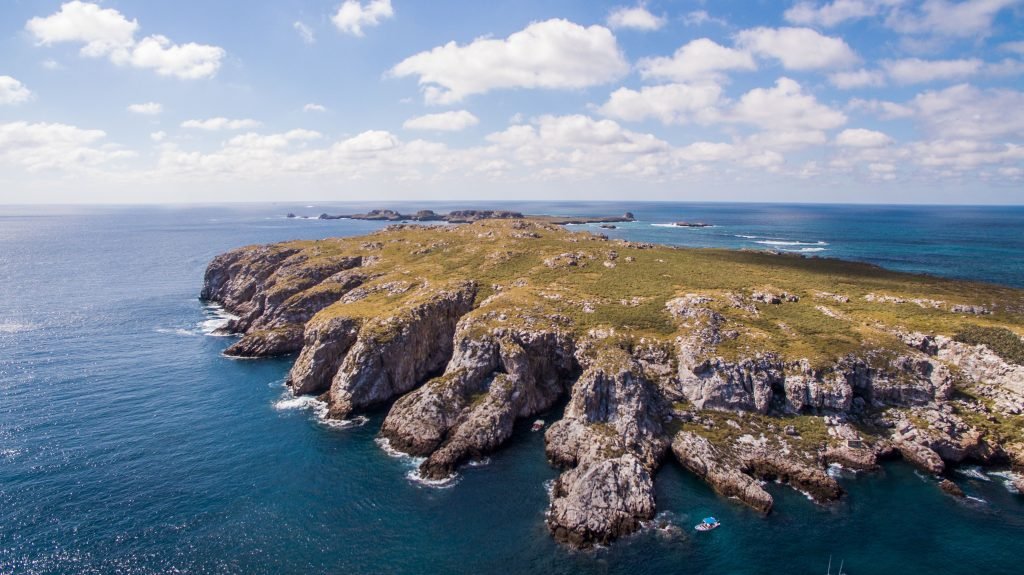
The most important things to consider when visiting the Marietas Islands are when you should visit (Nov-Apr), and how to get there. Since you first need to get to Punta Mita generally before getting on a boat. The Marietas Islands are a collection of small, uninhabited islands situated off the western coast of Mexico’s Nayarit state, in close proximity to Puerto Vallarta. These islands are a protected marine reserve, and are known for their abundant wildlife, crystal-clear waters, and stunning natural beauty. The islands were formed millions of years ago by volcanic activity, and are home to a wide variety of marine and bird species. The waters around the islands are teeming with colorful tropical fish, sea turtles, dolphins, and humpback whales (during their annual migration season). The islands are also an important nesting site for several species of seabirds, including the blue-footed booby and the red-billed tropicbird. The Marietas Islands are a popular destination for snorkeling, diving, and kayaking, as the waters are calm and clear, and there are plenty of underwater caves and rock formations to explore. Visitors can also take a boat tour around the islands to see the wildlife and the unique geological formations, including the famous “Lover’s Beach” (also known as “Playa del Amor”), which is a secluded beach nestled inside a collapsed cave. To preserve the natural beauty and delicate ecosystem of the islands, there are strict regulations in place for visitors. For example, access to the Hidden Beach is limited and requires a permit, and boats are not allowed to anchor near the islands to prevent damage to the coral reefs. Sometimes tours are altogether stopped and not allowed because of the strict preservation rules. Fact or fiction: Mexicos military performed bombing experiments over the Marietas Islands in the 1900’s? Fact! The military did use the Marietas Islands as a bombing range in the early 1900s, but this was long after the islands had been formed by natural processes. Over time, erosion and the action of the sea sculpted the islands into their current shape, which includes a distinctive “hidden beach” inside a collapsed volcanic crater. The bombing caused some damage to the islands, but it did not create them. Some argue the holes left in the rock were because of the bombings. However nothing suggests this to be true or otherwise. When you visit, you’ll have to see for yourself. Best time to visit the Marietas Islands? The best time to visit the Marietas Islands is during the dry season from November to April, when the weather is warm and the water is clear for snorkeling and diving. How do I get there/how far is it? First you must get to Punta Mita, where a boat can pick you up. Otherwise the trip will be much longer if you start on a boat in Marina Vallarta (which can still be arranged). The boat ride to the Marietas Islands takes about 20-30 minutes from Punta de Mita or Sayulita, depending on the weather conditions. Its a breathtaking place we highly recommend you visit while you’re here! At Marietas Islands, you can find a diverse range of fish species due to the unique ecosystem in the area, which includes a mix of tropical and temperate water conditions. Some of the common fish species found at Marietas Islands include: Yellowtail: A popular game fish with a firm texture and mild flavor. Red Snapper: A bottom-dwelling fish with a sweet, nutty flavor and firm white meat. Mahi-Mahi: A fast-swimming fish with firm, flavorful meat often used in ceviche and sushi dishes. Grouper: A large, slow-growing fish with a mild, buttery flavor and dense texture. Tuna: A popular game fish with a rich, meaty flavor that can be eaten raw or cooked. Roosterfish: A tough fighting fish with a distinct appearance and firm, white meat. Wahoo: A fast-swimming fish with a delicate texture and mild, sweet flavor. Jack Crevalle: A powerful game fish with firm, white meat and a slightly sweet flavor. Sierra Mackerel: A smaller fish with a delicate, sweet flavor and soft, white flesh. These are just a few examples of the many fish species that can be found at Marietas Islands, making it a popular spot for sport fishing enthusiasts and tourists looking to experience the diverse marine life in the area. Booking your trip. This is the most tricky place to visit when vacationing in Puerto Vallarta because of the strict rules implemented by the Mexican government. If you desire a visit to these incredible islands, contact us at Palmaracharters.com and we’ll help you get there. For ALL other things Vallarta, don’t forget to download our eBook “100 Things to-do in Puerto Vallarta.”
The Best Times and Places to Spot Turtle Hatchlings in Puerto Vallarta
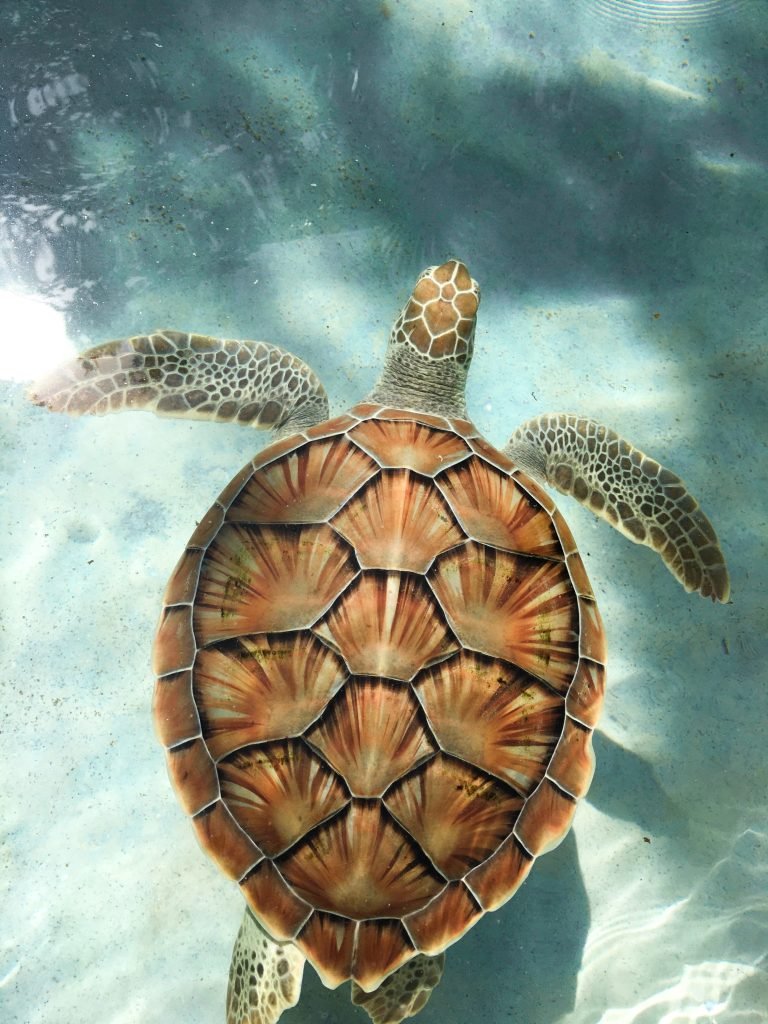
The ideal time to witness sea turtle hatchlings in the Puerto Vallarta area is usually from July to December, with Nuevo Nayarit being the most accessible location for observing them in the wild. During this period, various species, including the Olive Ridley and Pacific Green turtles, come ashore to lay their eggs, and the hatchlings emerge about 45 to 60 days later. Here in Vallarta, the awe-inspiring sight of baby turtles breaking through their shells and making their way to the ocean never ceases to amaze me. Witnessing a mother laying her eggs or the newborns hatching is truly a remarkable spectacle, especially if you happen to be in PV in the right place at the right time to see in person. As Puerto Vallarta is a stunning coastal city, one of its most spectacular natural wonders is the annual sea turtle nesting and hatching season. So, if you’re curious about when turtles hatch in Puerto Vallarta, we’ve got you covered. In this post, we’ll delve into all you need to know about this incredible phenomenon and provide tips to help you experience it. I’ve pinned a Google Maps location for you in Nuevo Vallarta where we see a lot of action both nesting and hatching throughout the year. Which months do turtles normally hatch in Puerto Vallarta? From July to December, Puerto Vallarta enters its sea turtle nesting season, with the peak of nesting occurring between late July and early August. After females lay their eggs, they incubate for about 45 to 60 days, resulting in hatchlings emerging from mid-August to early January. While the majority of hatchlings typically appear from October to December, these charming creatures can often be seen on the beach throughout the entire hatching season. When the baby turtles are ready to hatch, they use a specialized egg tooth to break their way out of the shell. After breaking through, they stay in the nest for a few days before making their way to the ocean, with the light of the moon serving as their guide. How to make the most of your turtle hatching experience in Puerto Vallarta Join a turtle release program: Witnessing a hatching event can be an unforgettable experience. To increase your chances of seeing this magical moment, we recommend joining a turtle release program. One way to find these programs is by following the Puerto Vallarta Facebook group, which keeps everyone updated on the latest hatching news around the bay. Check out the group here: https://www.facebook.com/campamentobocadetomates/ Respect the turtles and their nests: It’s essential to remember that sea turtles are a protected species, and disturbing their nests or interfering with the hatching process is illegal. Always follow the instructions of the turtle release program’s organizers and avoid approaching the turtles or their nests without permission. Be patient: Although turtle hatching season in Puerto Vallarta is a magical experience, it’s essential to keep in mind that it’s a natural process that can’t be predicted with complete accuracy. Therefore, patience is crucial. Take your time and enjoy the beauty of the natural world as it unfolds before your eyes. Which turtle species is the most common in the bay of Banderas? The Olive Ridley sea turtle is the most abundant sea turtle species in the area and can be found nesting on beaches in the region from June to December. The Pacific Green sea turtle can also be found nesting on beaches in the region from June to November. Other sea turtle species that have been recorded in the Puerto Vallarta area include the Loggerhead sea turtle (Caretta caretta), the Hawksbill sea turtle (Eretmochelys imbricata), and the Leatherback sea turtle (Dermochelys coriacea), but these are less common. Most of these turtles lay anywhere from an average of 80-100 eggs at a time. Unfortunately many of the babies are picked off by birds and marine animals when they’re young, so nearly all but one or two out of 100 will survive to adulthood. We hope you have the chance to witness a mother digging her hole on the beach and laying her eggs, or admiring the inherent instinct these baby turtles have by knowing where they must go once they break the egg open. Another one of mother natures incredible cycles of life on display for us here in beautiful Puerto Vallarta. On our yacht charter excursion we often find adults swimming on the surface which is always a treat. For more information and booking your next trip on the water, Palmara Charters today! For ALL other things Vallarta, don’t forget to download our eBook “100 Things to-do in Puerto Vallarta.”
